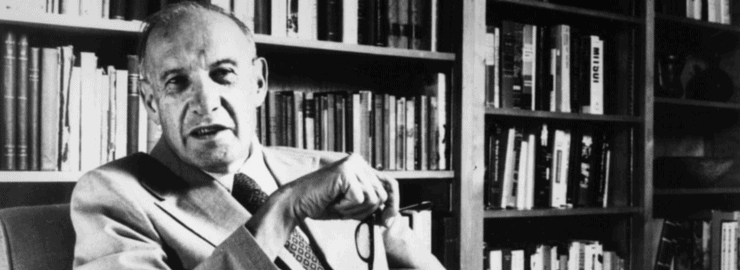If you’ve ever sat through a management course, you probably remember the name Peter Drucker.
Credited as the father of Management by Objectives (MBOs), Drucker’s 1954 book, The Practice of Management was the first to consider management as a whole and being a manager as separate responsibilities. Harvard Business Review says, “His writings are landmarks of the managerial profession” while the Wall Street Journal calls him “The dean of this country’s business and management philosophers.”
In The Practice of Management, Drucker outlined a process in which both management and employees would agree upon the objectives of an organization. When this happened, he believed, organizations would become more effective.
What Companies Rolled Out
Companies took note and began instituting annual (or quarterly) MBOs in modern business settings that had executives creating objectives and sharing them with their departments or business units—giving everyone a shared target. Then the work employees did to reach the goals was monitored. If the target objectives were achieved, performance was rewarded and management set new objectives for the next cycle.
Across industries, executives adopted MBOs hoping to promote maximum productivity, expecting that if employees knew what goals they were trying to reach, they would work more diligently toward them. Yet what we’ve seen over time is that MBOs have become mainly top-down, executive instruments. Most are hierarchically driven to cascade goals down from top management with few, if any, factoring in individual employee input upward.
This isn’t exactly what Peter Drucker had in mind. While his vision of MBOs included objective setting, a significant and important element of his thinking was omitted in how businesses translated his process.
The Part We’ve Been Missing All These Years
Drucker’s vision for MBOs included a discussion of self control, which he believed was critical to how employees accomplish tasks. The value of self control in the MBO process is that employees get to control their own performances. For Drucker, self control would lead to stronger motivation and better performance because individuals would have a desire to do their best rather than good enough.
It’s human nature to want to control our own destiny and Drucker understood this. When goals are given to employees from the top down, individuals aren’t as motivated to achieve them as they are when they’ve been involved in the process of deciding the goals from the start.
At BetterWorks, we’ve taken Drucker’s missing organizational management tenet to heart. We recognize the value of applying goal management and self control in one solution so organizations can empower individuals and in turn, gain a more motivated, autonomous workforce. One of the most obvious ways we are advancing this idea is in enabling employees to easily set, track and manage aspirational goals.
Self Control Leads to Stretch Thinking
Drucker believed managers must take risks and allow risk-taking decisions to take place at lower levels in the organization. This would require that employees at different levels of an organization have a say and some control over what objectives were being targeted and met. Drucker wanted employees to push one another and stretch to accomplish goals. We couldn’t agree more.
Stretch thinking—among low and high performers—yields positive business rewards. It can uncover new ways of doing business (e.g., opening new markets) and drive types of disruption and innovation never thought possible. Aspirational (or stretch) goals even provide learning experiences in times of failure.
But stretching doesn’t just benefit a business; it also motivates employees and increases achievement and accountability. It fosters increased communication because more people work together—typically within and across departments—to make stretch goals a reality.
BetterWorks Supports Aspirational Goals
With the addition of self-control to MBOs, Drucker offered a powerful solution to align businesses. Our enterprise goals platform is helping companies make his vision for success a reality by providing transparency and accountability. Within BetterWorks, everyone in the organization—bottoms-up, top-down, and across the organization—can set and manage goals. They can also support peers through social engagement (e.g., comments, nudges, and cheers) and self assess performance against measured outcomes.
Organizations can set up goal scoring in our platform to work the way that makes the most sense for their employees—numbers or even smiley faces—keeping individuals inspired, up to date, and in sync toward objectives. Because we believe “a connected team is an engaged team,” BetterWorks helps organizations cut the time and effort it takes to do annual performance evaluations by providing real-time data about how work gets done.
If businesses had equally applied Drucker’s vision for goals with his vision about self control, MBOs might still be the preferred management methodology. Because they haven’t, organizations are looking to evolve their current processes to achieve better alignment and accountability. We hope Drucker would be pleased with how our platform is steering them back toward his original vision.
Do you agree? We’d love to hear your thoughts.







